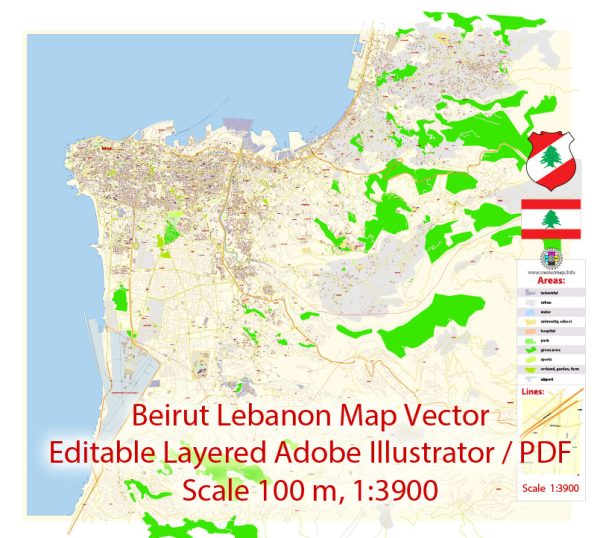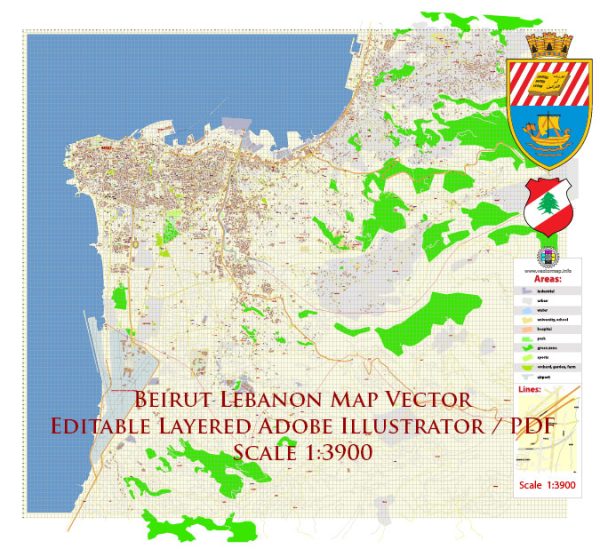Beirut, the capital of Lebanon, has a rich and complex history of urban development that spans thousands of years. Its strategic location on the Mediterranean coast has made it a significant center of trade, culture, and power throughout the ages. Here is a brief overview of the history of urban development in Beirut:
- Ancient Phoenician City: Beirut’s history dates back to at least 3000 BC when it was a part of the Phoenician civilization. It was known as “Biruta” and was a prominent port city for trade and maritime activities. The Phoenicians developed an advanced city with a well-structured urban layout.
- Roman Period: During the Roman Empire, Beirut was known as “Berytus.” The Romans made significant urban improvements, including the construction of roads, theaters, and bathhouses. Berytus became a major center for education, with a famous law school that attracted students from all over the Roman Empire.
- Byzantine and Arab Rule: Beirut continued to be a significant city during the Byzantine and early Islamic periods. In the 7th century, it was captured by the Arab-Muslim forces, and its role as a trade center was maintained. The city’s urban fabric evolved under Arab rule, influenced by Islamic architecture and culture.
- Crusader and Ottoman Eras: The city was captured by Crusaders in the 12th century and then fell under the control of the Mamluks in the 13th century. In the 16th century, it became part of the Ottoman Empire. During these periods, the city’s architecture and urban development were influenced by the respective rulers, leading to a mix of architectural styles.
- Modern Period: In the 19th century, Beirut began to experience significant modernization and urban development under Ottoman rule. European influences, especially from France, became more prominent in the city’s architecture and urban planning. The city expanded with the construction of new neighborhoods and infrastructure.
- French Mandate and Independence: After World War I, Lebanon came under French mandate, and Beirut continued to modernize. The French mandate had a lasting impact on the city’s architecture and institutions. In 1943, Lebanon gained independence, and Beirut became the capital of the newly formed nation.
- Post-Independence Boom: Beirut experienced significant growth and modernization during the mid-20th century. The city became known for its vibrant cultural scene, educational institutions, and economic activities. Modern skyscrapers and commercial centers began to dominate the skyline.
- Civil War and Reconstruction: The Lebanese Civil War (1975-1990) had a devastating impact on Beirut. Large parts of the city were destroyed, and the urban fabric was severely damaged. After the war, extensive efforts were made to rebuild and revitalize the city, leading to the construction of new buildings and infrastructure.
- Contemporary Beirut: Today, Beirut is a diverse and cosmopolitan city with a mix of modern and historic architecture. It remains a regional hub for trade, culture, and finance. The city continues to evolve, with ongoing urban development projects, as well as challenges related to infrastructure, traffic, and housing.
Beirut’s urban development reflects the city’s dynamic and complex history, with influences from various civilizations and historical periods. The city’s ability to adapt and rebuild after periods of conflict has contributed to its resilience and its role as a vital center in the region.



 Author: Kirill Shrayber, Ph.D.
Author: Kirill Shrayber, Ph.D.